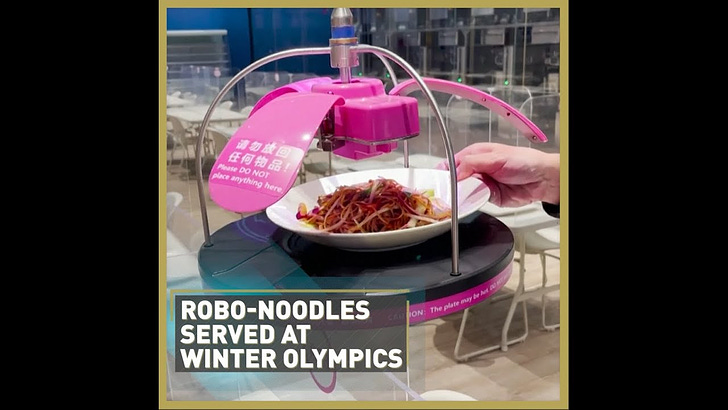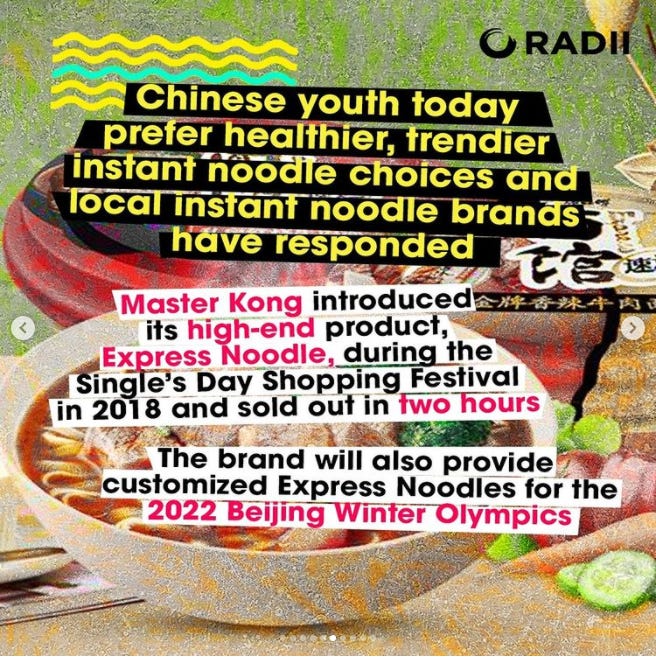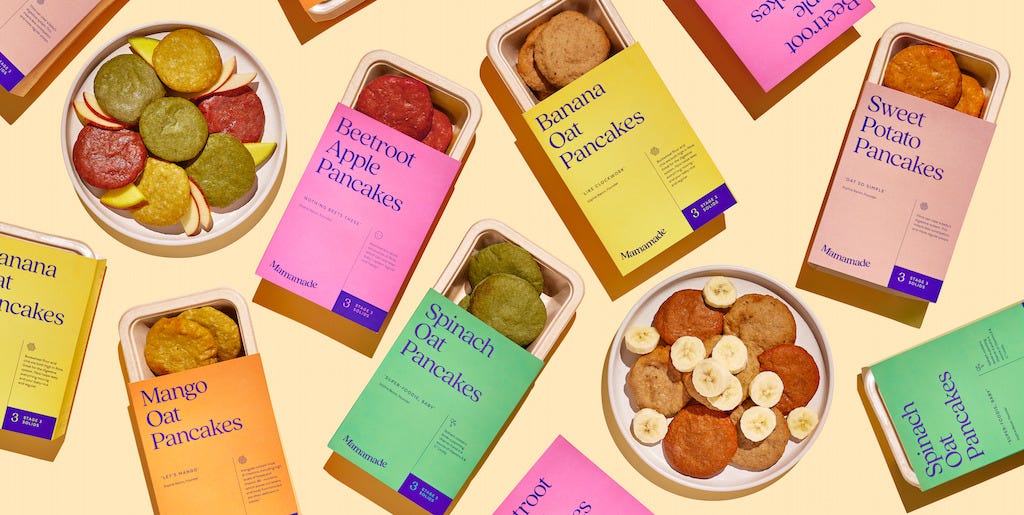🍙 Food, wellness, wealth and trends! 🦾 Robots, 🛵 subscription, 💸 inflation costs, food waste and of course, coffee 🤩 !
📣 Spread a little 💟 if you liked this post! This will definitely help me understand what you like and what you don’t 🤯 , and tell me more by leaving a comment 💬 !
FOODTECH CONFIDENTIAL
Hello, I’m Greg, founder of NextStep [F&B] Studio. FoodTech Confidential is a newsletter to share innovations, trends, and big news about the Food and Beverage industry with F&B professionals, FMCG experts, tech entrepreneurs, and investors with a focus on China, and Asia, this should help you on your business too!
Every post, here below, is full of links to various sources, visit them to know more about each particular topic.
🔄 Following the first publication, we got tremendous feedback, (and lots of calls!), so let me know how we could help you with your project! I simplified things and you can now easily book me here 🔄 .
🌶️ THE SPECIALS OF THE DAY
🛵 Who will be the Amazon of China?
😷 What if medical products could come from food waste?
🦾 How to serve food to over 20,000 people while keeping a zero-covid strategy?
😅 Why do restaurants often fail during their first year?
💸 How to check if your business is ready to absorb some of the inflation cost?
🌱 What if healthy food could be better for your business too?
🍲 Chinese youth consumers are looking forward to more healthy products, better instant noodles, less alcohol, … what are you offering to them?
🤩 Should you get someone famous to be on your strat board?
☕ Your coffee is about to cost you more!
🔴 WHAT’S NEW IN CHINA?
1 - 🛵 Someone is making moves to become the “Chinese Amazon of Service"
Meituan 美团, the Chinese food delivery, and local services giant, steps into e-commerce by integrating the product review feature into the app following the Zhongcao 种草 (“planting grass”) model, a marketing strategy that was first popularized by Xiaohongshu 小黄书. This model refers to the idea that favorable and comprehensive reviews of a product generate an urge to buy in consumers. It is a big deal because Meituan will now be selling physical products through their “Zhen Box” 珍箱 such as electronic appliances, smartphones, cosmetics, books,...
2 - 🦾 How do you serve meals to over 20,000 people with a touchless tech while keeping up with your zero-case approach?
Robots drop meals to athletes at the Beijing Winter Olympics Main Media Center when sitting at the restaurant, a huge ceiling-mounted robot arm lowers bowls of noodles to diners who are seated at Plexiglas-surrounded tables. There is also a “robot chef” that cooks and prepares hamburgers and other dishes that can be delivered remotely. Another robot grinds fresh coffee beans and brews a cup of coffee, and a third one is working as a bartender. The main objective is, of course, not only to improve the efficiency of meal supply but also save manpower to the maximum extent and avoid excessive human interaction in the context of epidemic prevention and control, since there are already over 20,000 volunteers alone, and outside food delivery is not allowed. See the video below.
💡 More videos are available on our Instagram account.
3 - ☕ Your coffee will cost you more.
Inflation is hitting the F&B industry everywhere (it’s actually the subject of several of the articles in this publication of FoodTech Confidential). Coffee chains such as Luckin Coffee, Tim Hortons, and now Starbucks have increased the prices of their beverages in China (between 1 and 3 yuan ($0.16 and $0.47). Without any surprises, higher operating costs (Labor and supply chain costs) would be one of the multiple factors to blame. Starbucks opened its first store in Beijing in 1999 and has now over 5,500 stores in the country. And, for the first time since 2018, they had to increase the price of their coffee.
4 - 🍲 What will Chinese consumers eat in 2022?
Chinese youth increasingly turned to healthier and trendier food choices last year, and they also demanded higher quality edibles — even when it came to instant or ready-to-eat meals. In this article, RADII China is sharing some of its predictions of what young people in China will be eating and drinking in 2022, from plant-based products and various dietary trends to non-alcoholic drinks.
🔵 WHAT’S HAPPENING IN THE WORLD?
1 - 🌱 Combining a subscription model with a healthy offer could be “better-for-you” too!
Entrepreneurs are often looking for a way to get a subscription model which is often considered the perfect business model! So what if you could just get the food you need based on your dietary restrictions or habits. Splendid Spoon in New York is getting closer thanks to their recent fundraising to reinforce their plant-based meal subscription offer and Mamamade had the same success with their healthy baby food offer. And if you are looking for more inspiration in the subscription model, here is a good summary of 20 food delivery subscription offers.
2 - 🤩 What if famous people could help your brand?
Leonardo Di Caprio and Ashton Kutcher are both well known for backing many start-ups such as Uber or Airbnb. But lately, Celebrities, such as Jay-Z, Katy Perry, Oprah Lewis Hamilton, and many others,… have expanded their portfolio to change the food industry. Recently, after backing Oatly, Natalie Portman helped French company La Vie, creator of vegan pork, secure a record-breaking investment of $28.3 million. The reason could be also that the emergence of social media in particular, has helped shape the role of advisory boards and their purpose beyond their public exposure and of course, what works with popular actors, athletes or singers works also with politicians and can certainly help “cut through a lot of noise” in the startup world.
3 - 💸 How is inflation impacting the restaurant business exactly?
An increase in cost is impacting every block of the chain in any business, but how is this affecting the restaurant business? “The unusual part is when inflation impacts all parts of the business all at once, and at a faster rate, from labor costs to materials and ingredients. Business owners should routinely track increased costs and adapt. Those who don’t are effectively lowering their prices.” As usual, the devil is in the details, and here is a nice checklist you will want to look into for your business, but here is also the impact of inflation on the grocery list.
4 - 😅 Why do restaurants usually fail during their 1st year of operation?
In 2020, 50% of limited-service restaurants in the UK became distressed businesses due to changes in consumer behavior due to the COVID-19 pandemic. But why do restaurants fail? One of the major reasons is, obviously, low profitability. Some other reasons attributed to this are:
high staff cost
high rental cost
high cost of employees
low customer inflow
high managing cost.
According to data, nearly 60% of new restaurants fail within the first year and 80% of them close down before the fifth year, here is a detailed list you can review to check on your business.
5 - 😷 What if your bandage could be made of recycled fruit skin?
“If the materials are derived from the food we eat daily, it would also make sense that they would be accepted and compatible with our bodies in other senses.
Interesting examples include the leftover pulp from sugarcane and soya beans, herbs in our spice drawer, coffee grounds, and brewers' spent grain - the leftover material from making beer or Milo powder. Here is a good example of how Singaporean food tech companies are working on it.
🔄 Are you looking for specific info? Let’s talk about it!
🔥 That’s it and now, it is your turn!
What was the one piece of news you never heard about?
What would you like to start exploring for your business?
If you are already working on one of those topics, any feedback you could share with our community? We will keep it confidential…🤫
Also, as you can imagine, while doing my research, I am finding a lot more things that didn’t make the cut here (and some are going straight to LinkedIn). Let me know if you’d like to know more and drop me a comment 💬, or just reply to this email directly.








thanks Greg for the insights, particularly the one about food waste and its potential medical application - number 5 -